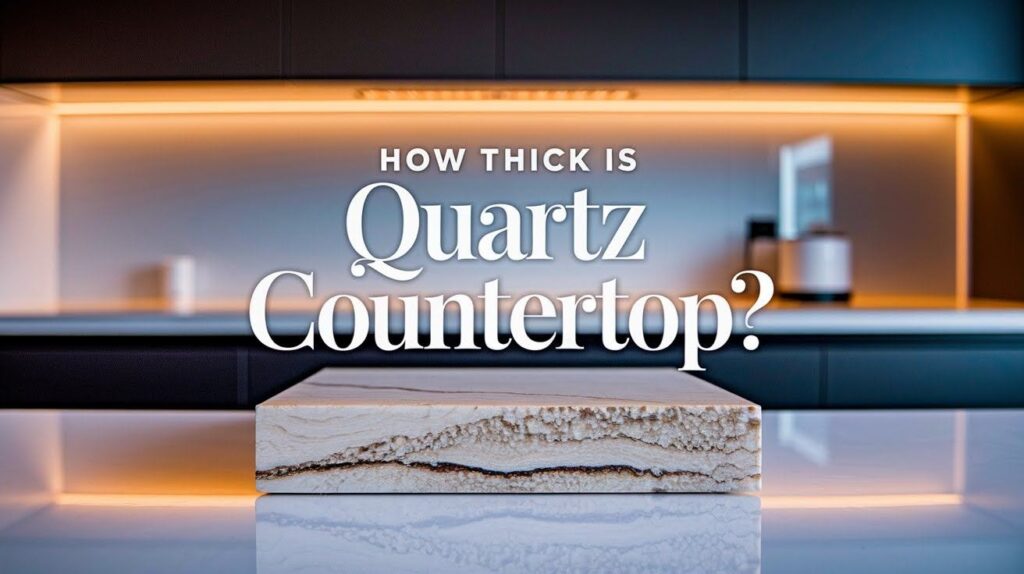Planning for a kitchen renovation and wondering how thick quartz countertops are? This is a decision that you share with me.
Quartz countertops can offer consistent patterns in addition to durability. They also resist staining as well as scratching. They have become popular because of their non-porous surface.
The right thickness has been chosen by me for countless homeowners since it can affect more than just appearance. Your project’s price, longevity, and style are all affected. The impact is overall.
This guide will show thickness choices, contrast advantages and disadvantages, and help decide what suits your needs, budget, and design goals. Find your perfect fit right away.
Standard Quartz Countertop Thicknesses
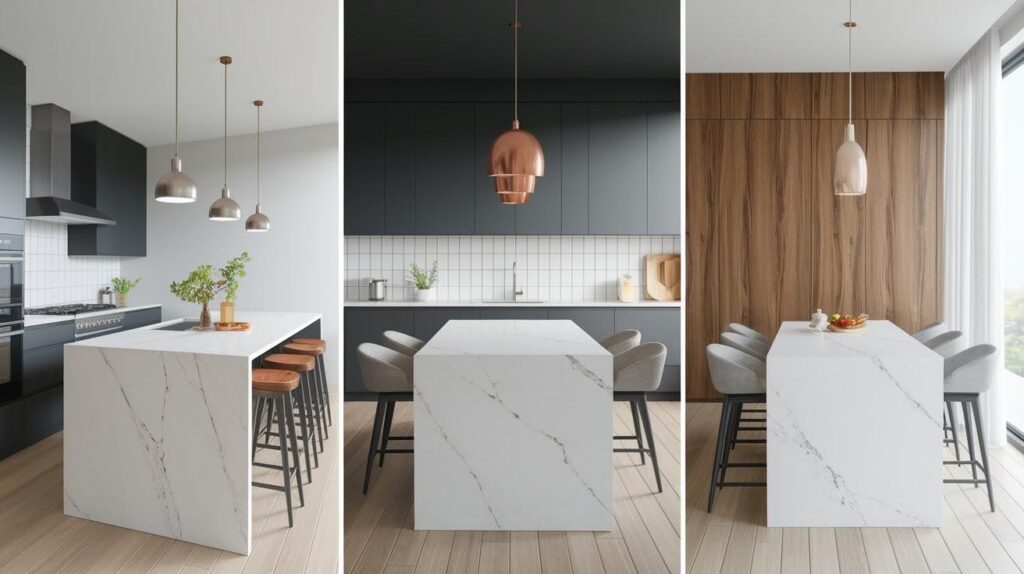
Quartz countertops come in three standard thicknesses: ultra-thin, thin, and thick options, each suited for different applications and budgets.
Ultra-Thin Quartz Countertops (1-1.2 cm / ½ inch)
Ultra-thin quartz works perfectly for backsplashes, vertical applications, and decorative wall cladding. These lightweight options create modern appearances while keeping costs manageable.
However, they require additional structural support and are less resistant to impact damage than thicker alternatives.
Thin Quartz Countertops (2 cm / ¾ inch)
Two-centimeter thickness offers the most popular choice for standard kitchen and bathroom countertops.
This option balances performance, appearance, and budget effectively for most residential applications. Some installations may need reinforcement around sink cutouts or overhangs.
Thick Quartz Countertops (3 cm / 1¼ inch)
Three-centimeter quartz provides maximum durability and a premium appearance for high-end installations.
This thickness handles heavy use without extra structural support and creates luxurious visual weight. Higher costs and increased weight require stronger cabinets and professional installation.
Factors to Consider When Choosing Quartz Thickness
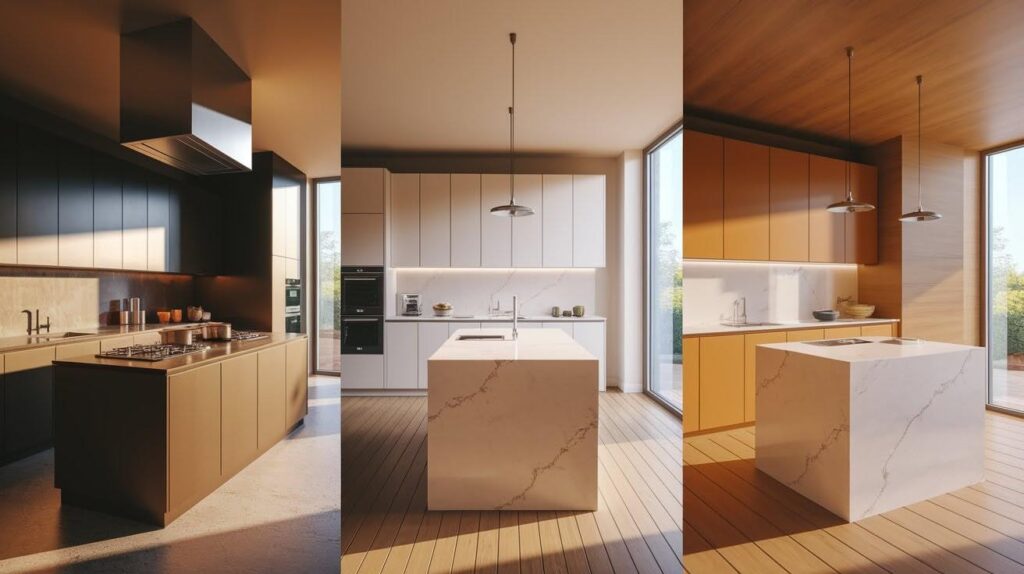
Key considerations include daily usage patterns, design aesthetic preferences, budget constraints, and structural requirements when selecting an appropriate quartz countertop thickness.
Durability & Usage
Your daily kitchen habits should guide thickness decisions. Heavy cooking and frequent food prep require thicker slabs for maximum durability. High-traffic areas like kitchen islands benefit from 3cm thickness, while decorative areas can use thinner options.
Design & Aesthetic Considerations
Different styles work better with specific thicknesses. Minimalist kitchens favor thin profiles for streamlined appearances. Luxury designs showcase thick slabs for substantial visual presence and premium appeal.
Budget Considerations
Material costs increase significantly with thickness. Ultra-thin options cost the least but may need additional support. Thick slabs represent higher investment but eliminate reinforcement needs and offer better long-term value.
Popular Quartz Brands & Their Thickness Options
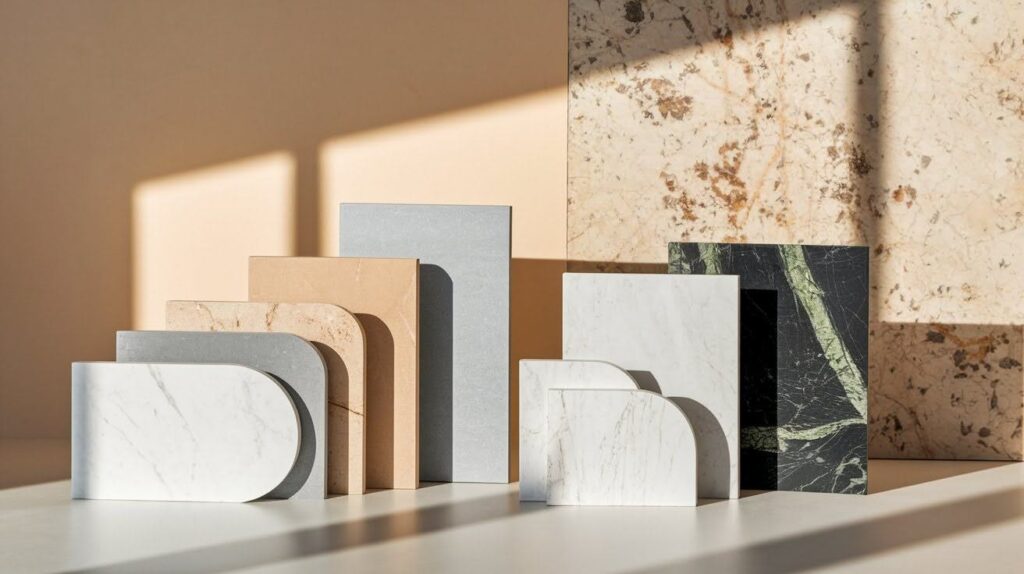
Leading quartz manufacturers offer various thickness options to suit different applications, budgets, and design preferences for residential and commercial projects.
Caesarstone
Caesarstone offers three standard thickness options: 1.3 cm, 2 cm, and 3 cm to accommodate various project needs.
Their surfaces resist scratches and stains effectively while requiring minimal maintenance for busy households. The brand’s consistent quality makes it a reliable choice for both residential and commercial applications.
Cambria
Cambria provides 1 cm, 2 cm, and 3 cm thickness selections with versatile edge profile options. Their durable surfaces maintain appearance over time while offering refined patterns and colors.
The brand’s manufacturing standards ensure consistent thickness and quality across its product lines.
Silestone & Quartzite
Silestone typically comes in 2 cm and 3 cm thicknesses for most residential projects. These surfaces offer excellent durability for indoor kitchen and bathroom applications.
Some Silestone products have specific indoor use recommendations to maintain warranty coverage and optimal performance.
Quartz Edge Profiles and Their Impact
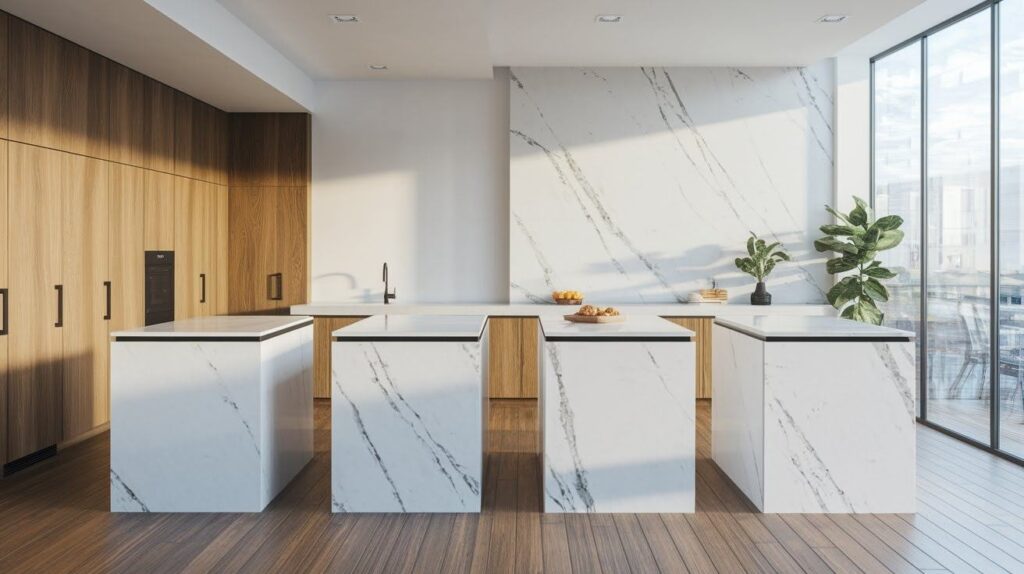
Eased edges feature slightly rounded corners for comfort and safety, while straight edges offer clean, contemporary lines.
Bevel edges add visual interest with angled cuts that create shadow lines, and double bevels provide a refined appearance with complex angles. Each style influences how thick your countertop appears and affects overall kitchen aesthetics.
Thin slabs work best with simple edge profiles like eased or straight edges to avoid overwhelming the material.
Thick slabs accommodate elaborate treatments like double bevels that showcase substantial thickness.
Consider maintenance requirements, as intricate designs collect more dirt, and budget impacts vary by complexity since detailed profiles require additional fabrication time.
Conclusion
Understanding the successful renovation stems from the perfect quartz thickness. Most of the kitchen applications suit 2 cm, while ultra-thin options work perfectly for backsplashes.
Durability that is extra is provided by 3 cm for busy households. When deciding, balance daily needs with budget and design preferences.
I chose 3 cm in the design for my kitchen. It withstood many years of hard use nicely. For your project’s structural needs, speak with fabrication experts as well as see samples in person at a nearby showroom.
Tell us of which exact thickness you are thinking. Place your comments in the area below. Tell me about your project if you please!
Frequently Asked Questions
What is the most common thickness for quartz countertops?
The most popular thickness is 3cm (1¼ inch) for its durability and premium appearance. However, 2cm (¾ inch) is also widely used for standard residential applications.
Can I use 2cm quartz for kitchen islands?
Yes, 2cm quartz works well for kitchen islands with proper support and reinforcement. Consider a 3cm thickness for large overhangs or heavy-use areas without additional brackets.
Does thicker quartz cost significantly more?
Thicker quartz slabs cost more per square foot due to additional material. The price difference typically ranges from 20-40% more for 3cm versus 2cm options.
Do I need extra cabinet support for 3cm quartz?
Most quality cabinets handle 3cm of quartz weight without modifications. However, older or lightweight cabinets may require reinforcement for proper support and warranty compliance.
Can quartz thickness be customized beyond standard options?
Some fabricators offer custom thickness options, but this significantly increases costs and lead times. Standard thicknesses are more readily available and cost-effective for most projects.

